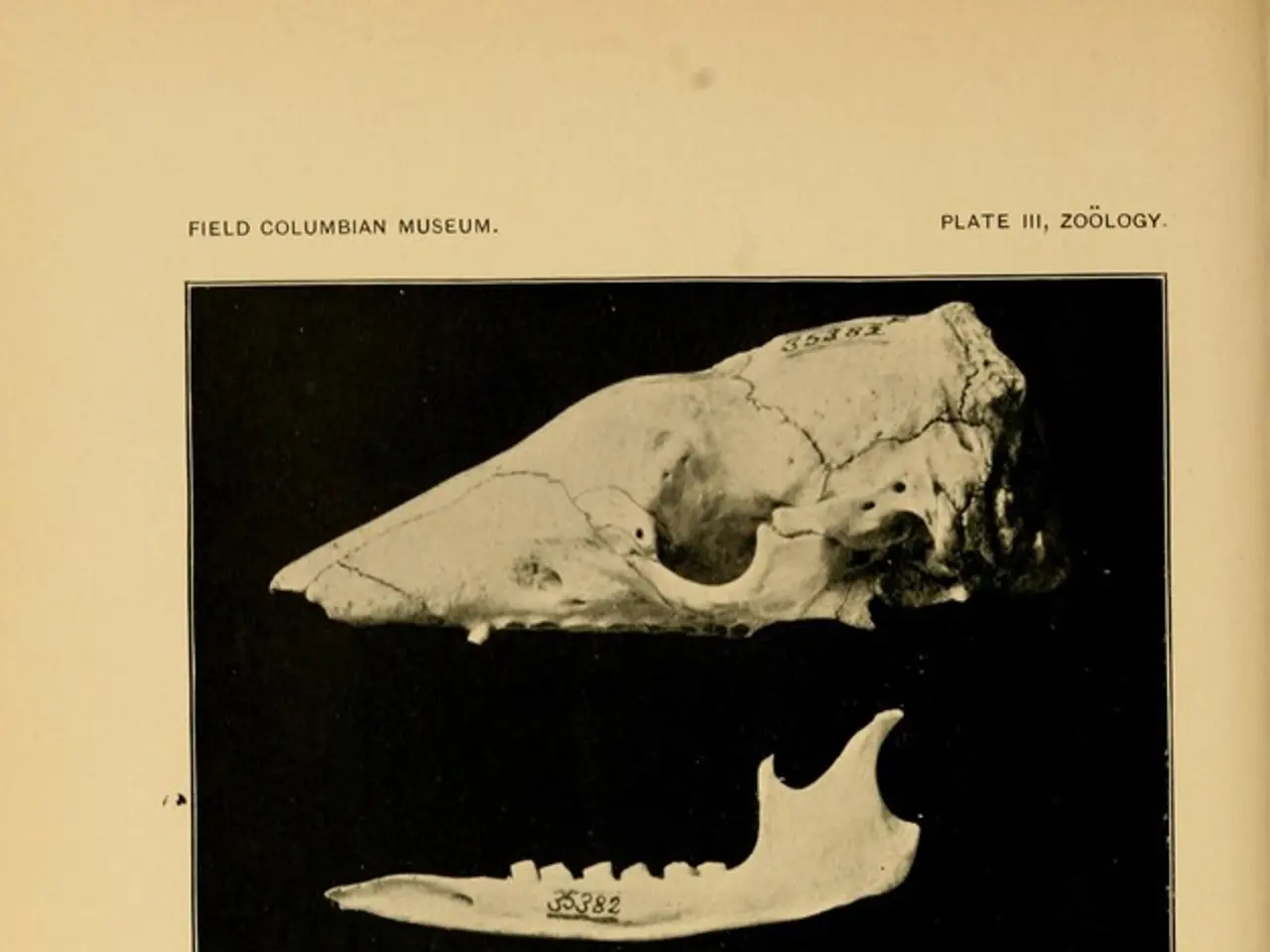Connection between hyperparathyroidism and lower back pain
Hyperparathyroidism, a condition characterized by excessive production of parathyroid hormone, can lead to a range of symptoms, including bone and back pain. This article aims to shed light on the common causes and associated symptoms of this condition.
The root of bone and back pain in hyperparathyroidism often lies in the increased bone resorption caused by elevated parathyroid hormone (PTH) levels. This hormone-driven breakdown of bone tissue leads to osteoporosis, a condition characterized by weakened bones, and sometimes more severe bone disease such as osteitis fibrosa cystica. These weakening processes can result in pathological fractures, including vertebral compression fractures, which are a common cause of back pain [1][4][5].
The symptoms associated with hyperparathyroidism-induced bone and back pain are diverse. They include generalized bone pain and fragility, often localizing in the spine or long bones, musculoskeletal symptoms such as muscle weakness and cramps, and symptoms related to complications of bone loss, such as fractures and deformities [3][5]. Back pain may also be accompanied by other systemic symptoms of severe hypercalcemia, including fatigue, weakness, nausea, vomiting, constipation, and neuropsychiatric symptoms like depression and memory issues [1][3].
If hyperparathyroidism is suspected, blood tests may be conducted to check for high calcium levels. In cases of secondary hyperparathyroidism, caused by chronic kidney disease, a doctor may screen for signs by testing kidney function [2].
Treatment options for hyperparathyroidism may include bisphosphonates, cinacalcet, vitamin D supplements, and avoiding dehydration. In severe cases, surgery to remove the overactive parathyroid glands is the primary cure. A procedure called bilateral neck exploration may be recommended to assess and remove only the overactive glands [6].
It is essential to seek medical help if back pain persists for more than a few weeks, if it is accompanied by numbness or tingling sensations, severe back pain, back pain after a serious injury or fall, back pain alongside trouble urinating, weakness, fever, unintentional weight loss, or any other concerning symptoms.
In conclusion, bone and back pain in hyperparathyroidism primarily arise from the hormone-driven breakdown of bone tissue, leading to osteoporosis, osteitis fibrosa cystica, and fractures. This manifests as diffuse or localized bone pain, tenderness, and disability related to fractures, especially of the vertebrae, causing back pain. Early diagnosis and treatment can help manage the symptoms and prevent complications.
References:
[1] Mayo Clinic. (2021). Hyperparathyroidism. https://www.mayoclinic.org/diseases-conditions/hyperparathyroidism/symptoms-causes/syc-20354711
[2] NHS. (2021). Hyperparathyroidism. https://www.nhs.uk/conditions/hyperparathyroidism/
[3] Cleveland Clinic. (2021). Hyperparathyroidism. https://my.clevelandclinic.org/health/diseases/16730-hyperparathyroidism
[4] Johns Hopkins Medicine. (2021). Hyperparathyroidism. https://www.hopkinsmedicine.org/health/conditions-and-diseases/hyperparathyroidism
[5] American Thyroid Association. (2021). Hyperparathyroidism. https://www.thyroid.org/thyroid-disease-focus-areas/hyperparathyroidism/
[6] American Thyroid Association. (2021). Hyperparathyroidism: Diagnosis and Management Guidelines. https://www.thyroid.org/wp-content/uploads/2019/05/ATA-HyperparathyroidismGuidelines-2019.pdf
- Hyperparathyroidism, a condition with excessive parathyroid hormone production, can lead to bone and back pain.
- The increase in parathyroid hormone (PTH) levels triggers bone resorption, leading to osteoporosis or even severe bone diseases like osteitis fibrosa cystica.
- Osteoporosis weakens bones, increasing the risk of pathological fractures, such as vertebral compression fractures, causing back pain.
- Generalized bone pain and fragility, often localizing in the spine or long bones, can be symptoms of hyperparathyroidism-induced bone and back pain.
- Musculoskeletal symptoms like muscle weakness and cramps may also occur due to hyperparathyroidism.
- Fractures and deformities related to bone loss are complications that can accompany back pain in hyperparathyroidism.
- Severe hypercalcemia may cause systemic symptoms like fatigue, weakness, nausea, vomiting, constipation, and neuropsychiatric symptoms like depression and memory issues.
- Blood tests checking for high calcium levels can help diagnose hyperparathyroidism.
- In cases of secondary hyperparathyroidism caused by chronic kidney disease, doctors may test kidney function.
- Treatment options for hyperparathyroidism include bisphosphonates, cinacalcet, vitamin D supplements, and maintaining hydration.
- Surgery to remove the overactive parathyroid glands is a primary cure in severe cases, with a procedure called bilateral neck exploration potentially recommended.
- Persistent back pain, numbness or tingling sensations, severe back pain, back pain after a serious injury or fall, back pain alongside trouble urinating, weakness, fever, unintentional weight loss, or any other concerning symptoms require medical attention.
- Early diagnosis and treatment can help manage the symptoms of hyperparathyroidism and prevent complications.
- Bone and back pain in hyperparathyroidism primarily stem from the hormone-driven breakdown of bone tissue, causing osteoporosis, osteitis fibrosa cystica, and fractures.
- These manifest as diffuse or localized bone pain, tenderness, and disability related to fractures, especially of the vertebrae, causing back pain.
- Hyperparathyroidism is one of the various medical conditions affecting health and wellness, including chronic diseases, cancer, respiratory conditions, digestive health, eye health, hearing, and neurological disorders.
- Apart from hyperparathyroidism, individuals may experience health issues related to fitness and exercise, sexual health, autoimmune disorders, mental health, mens' health, skin care, weight management, cardiovascular health, and aging.
- It is essential to address workplace-wellness, women's health, parenting, and Medicare to ensure comprehensive healthcare and maintain overall health, especially when dealing with medical conditions like hyperparathyroidism, utilizing therapies, treatments, nutrition, and skin-care solutions when necessary.




